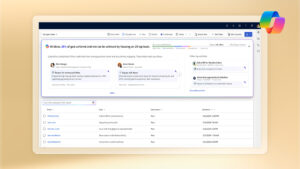
Celebrate Customer Service Week and the agents who make it all happen
Customer Service Week is this week, October 7-11, and it certainly feels like an opportune moment to reflect on how much has changed in the customer service space over the past year. For those of you who understand what goes on behind the veil of customer service, you know how it feels to get in that groove of providing answers and support, knowing you’re helping to improve someone’s day. You also know how crucial it is that the tools you use to get your job done don’t fail you in the middle of said groove.
The general understanding of a contact center is rather simple: call in and get an answer. Period. However, anyone who has ever worked in a contact center knows the reality of how operations are run, and that general understanding is far from simple. Running a contact center takes strategy, analytical thinking, flexibility, and creativity—and most of all, it takes grit.
How well you deliver customer service is really based on two factors: your customer service operating system and the people wielding the tools. There needs to be a balance and a harmony between the customer service application and the agents, because one is only as effective as the other. Your agents and your customer service application are equally important in this customer service equation and need to be in sync to maximize efficiency and productivity.
When agents and technology are off-kilter
If your customer service application is under-performing, then it’s safe to assume your agents are under-performing as well. For example, clumsy, ill-kept customer service knowledge bases lengthen issue resolution, as agents must dig through content to secure an answer. This increases call handling times, which in turn affects agent job performance and ultimately leads to agent turnover and poor customer satisfaction.
Perhaps worse than having a poorly maintained knowledge base is the absence of any customer self-service option at all. When self-service isn’t an option, agents must carry the burden of handling even the most trivial customer inquiries, which takes their time and attention away from resolving more stimulating and challenging issues. Monotonous, repetitive tasks and the lack of intellectual stimulation are often cited as factors in agent turnover.
Consider the paradox of offering agents a high-performing customer service application but failing to adequately train agents on how to leverage the tools provided to them. What’s the value of a tool if the user doesn’t know how to use it? Nails are of little use without a hammer. These are just a few of the imbalances that plague customer service organizations.
How to create a state of Zen in your contact center
First, since this is Customer Service Week, I’d like to embrace the equation of balance and take time to honor every agent’s contribution and fortitude to resolve customer issues day in and day out. It’s hard to imagine what the customer-brand relationship would look like without these dedicated stewards of customer care.
With this sense of gratitude in mind, let’s look at some of the ways to create better balance within your customer service organization by leveraging technology to empower your people.
Offer a self-service portal
As previously mentioned, repetitive, mundane inquiries can erode an agent’s morale. This lack of challenge creates tedium, which can drive an agent to seek employment elsewhere. Rather than saddling agents with this monotony, create a self-service portal where customers can receive 24/7 support to answer the most common, easily-resolved questions. Since 66 percent of consumers opt to begin with self-service options before seeking help from a live agent, satisfy your customer’s needs for independent, immediate resolution by providing a self-service portal for routine inquiries. Give your agents time to tackle more complex issues when the simplest questions are being resolved on their own.
Automate, automate, automate
Free up agent time even more by automating warranty registrations, information on product deliveries, disseminating manuals and quick start guides, updating address changes, and billing inquiries. Customers can complete a form or answer a few questions, and then be guided to the right department or process to complete the task.
Virtual agents or bots are a great way to introduce automation to the self-service workflow. Bots can be created to assist customers in better defining their service needs and can guide customers to the right article or action. Bots can be designed to complement self-service options by navigating customers to the best knowledge article to find the best answer. Customer service bots should engage conversationally with customers using natural language processing, and if the issue is too complex, bots can provide a warm hand-off to your human agent. In this way, agents are challenged by only receiving the issues bots are unable to resolve.
Food for thought: beef up your knowledge base
After ensuring your self-service portal and virtual agents are established, and agents are spending their time on more complex issues, you can focus on leveraging your agent’s knowledge by having them help with ongoing knowledge base article updates. Your agents harbor a wealth of knowledge after spending most of their time on the front lines tackling customer questions and knowing which information is most pertinent in getting answers. Documenting agent knowledge is a great way to assess the skill set of your agents while sharing their expertise on a particular product or service. Plus, it offers variety to their workday and allows them to showcase their strengths.
Agents can also help create and maintain bots. Dynamics 365 Virtual Agent for Customer Service uniquely allows those closest to the customer to create bots without the need of a developer or data scientist. Your subject matter experts can update the bot with fresh content at-will, thereby avoiding the need for intermediaries, while learning something new.
Never stop learning
Continuous training and career advancement can help create balance. Keeping agents abreast of new customer service application features and processes can ignite agent interest and creativity around improving processes. Staying in-check with what agents know and are interested in can also lead to identifying agents based on skills or expertise in specific areas and can make it easier to set up a skills-based routing system. A skills-based routing system directs specific issues to specific agents based on that agent’s area of expertise. Segmenting agents based on expertise can increase first contact resolution rates while providing a sure-fire way for agents to successfully resolve issues they know the most about.
Provide the best toolbox
Of course, none of these suggestions will help create greater balance if you fail to provide your agents with the best tools available. You can create a portal, add bots, train, and incentivize your agents, but their performance will never be optimal if you don’t give them the right toolset. To fully create a state of Zen, you need a customer service application that reflects your strategy, analytical thinking, flexibility, and creativity—that is, a customer service application designed to empower agents to succeed.
Microsoft Dynamics 365 Customer Service offers a rich toolset designed to arm your agents with exactly what they need for continued success. Dynamics 365 Customer Service offers a 360-degree view of the customer, including a complete customer history available on an intuitive and easy to use dashboard. This ensures agents have all the information they need to resolve issues quickly. And, with omnichannel capabilities, agents can resolve issues on the customer’s channel of choice, bridging the entire channel landscape and providing a single, seamless experience for the customer.
And that’s just the beginning. Customer Service and Virtual Agent for Customer Service easily integrate with Dynamics 365 Customer Service Insights, an AI-enabled analytics program that identifies opportunities for improvement within customer service organizations. This set of customer service applications fuels your organization with a modern, efficient, and adaptive work environment that enables you to earn customers for life.
Now that is how you create a state of Customer Service Zen.
Get more information on Microsoft Dynamics 365 Customer Service.
Learn more about Microsoft Dynamics 365 Customer Service Insights and Microsoft Dynamics 365 Virtual Agent for Customer Service.




